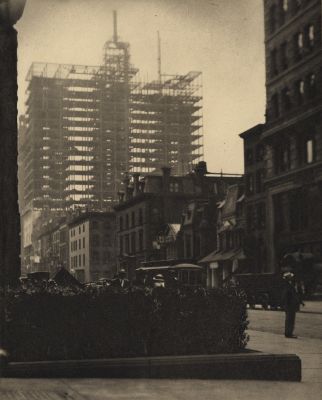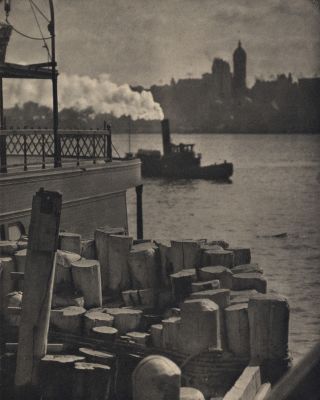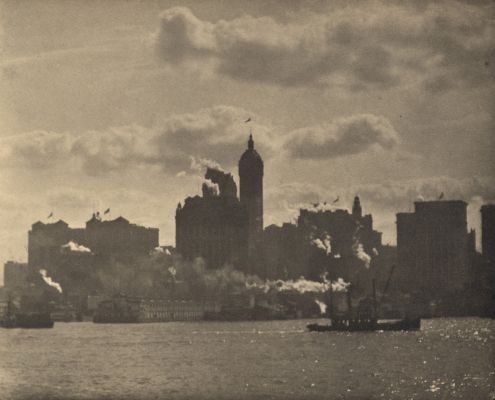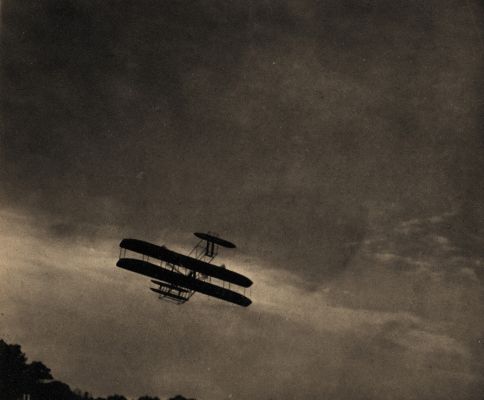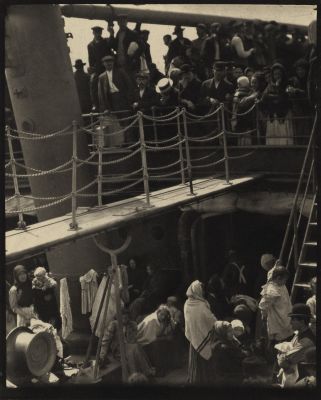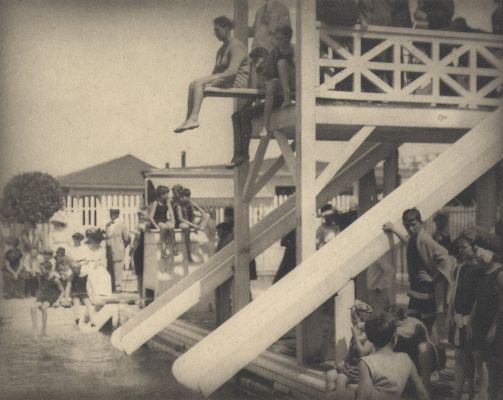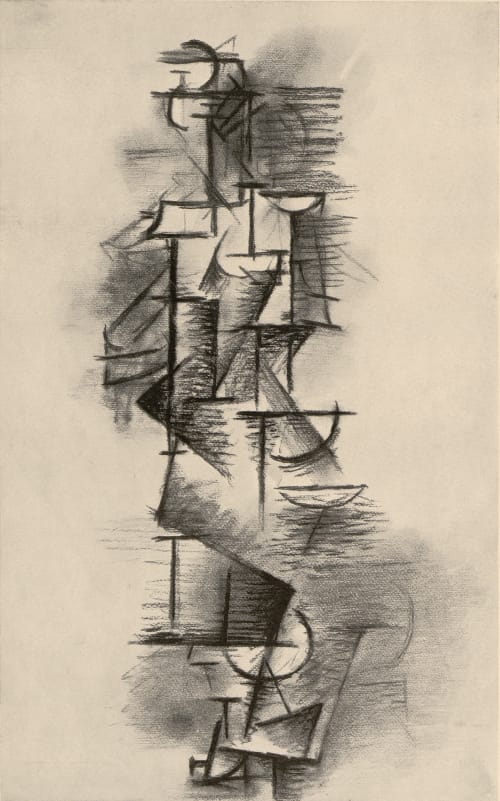
Title
Standing Female NudeArtist
Picasso, Pablo (Spanish, 1881-1973)Publication
Camera Work XXXVIDate
1910Process
HalftoneImage Size
27.8 x 17.2 cm
In March 1911, Alfred Stieglitz’s small gallery in New York, 291, opened a large exhibition of forty-nine drawings and watercolors by Pablo Picasso, the artist’s first showing anywhere in America. Among the highlights in the show, which surveyed the development of his art up to Analytic Cubism (1906-11), was this highly abstract charcoal drawing of a standing female nude, one of several studies on this theme he produced in the spring of 1910. It was, no doubt, one of the most radical drawings in the show and its linear, lattice-like construction prompted the press to derogatively call it "the fire escape." Although reduced to a series of lines and semicircles, without any semblance of three-dimensional form (despite areas of considerable shading), the essential parts of a human body-head, neck, shoulders, arms, torso, breasts, legs, and kneecaps-are all there. The controversy caused by this drawing was incitement enough for Stieglitz to purchase the work for his collection as a representation of the new direction of modern art. In 1910 he included it as a half-tone in Camera Work XXXVI – the issue was otherwise devoted exclusively to Stieglitz. In 1913, he lent it to the large international exhibition of modern art in New York known as the Armory Show, where it was overshadowed by the uproar surrounding Duchamp’s Nude Descending a Staircase.
Reproduced / Exhibited
Whelan, Richard. Alfred Stieglitz: A Biography. , 1997. pp. 310-311
Frank, Waldo D. America and Alfred Stieglitz: A Collective Portrait. New York: Aperture, 1979. pl. 50
Homer, William I. Alfred Stieglitz and the American Avant-Guarde. Boston: New York Graphic Society, 1979. no. 32.
Doty, Robert M. Photo-secession: Photography As a Fine Art. N.Y: Eastman, 1960. p. 59.
Greenough, Sarah, and William C. Agee. Modern Art and America: Alfred Stieglitz and His New York Galleries ; [catalog of an Exhibition Held at the National Gallery of Art, Washington, D.c., 28 January – 22 April 2001]. Washington: National Gallery of Art, 2000. fig. 14 (original)
